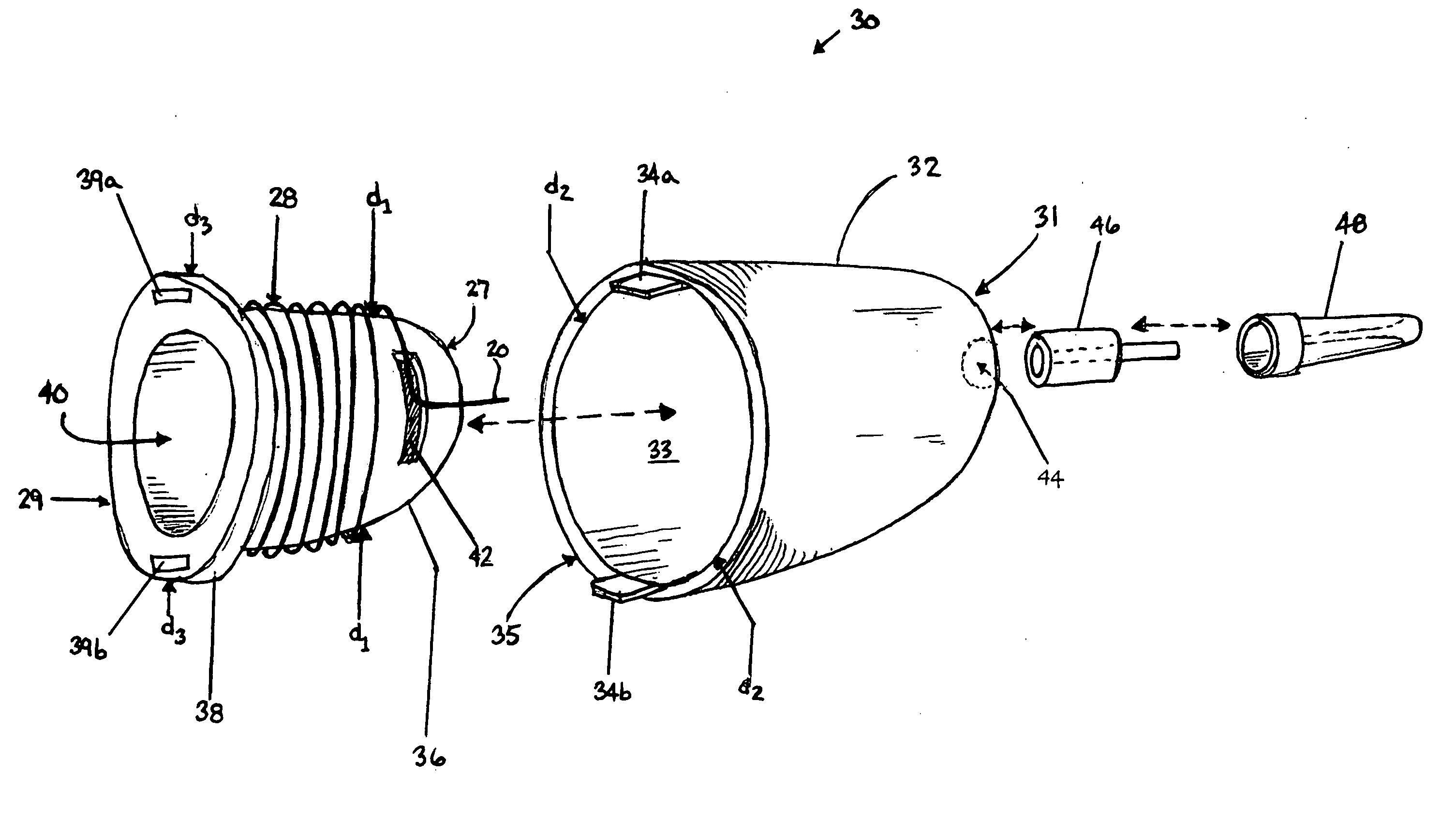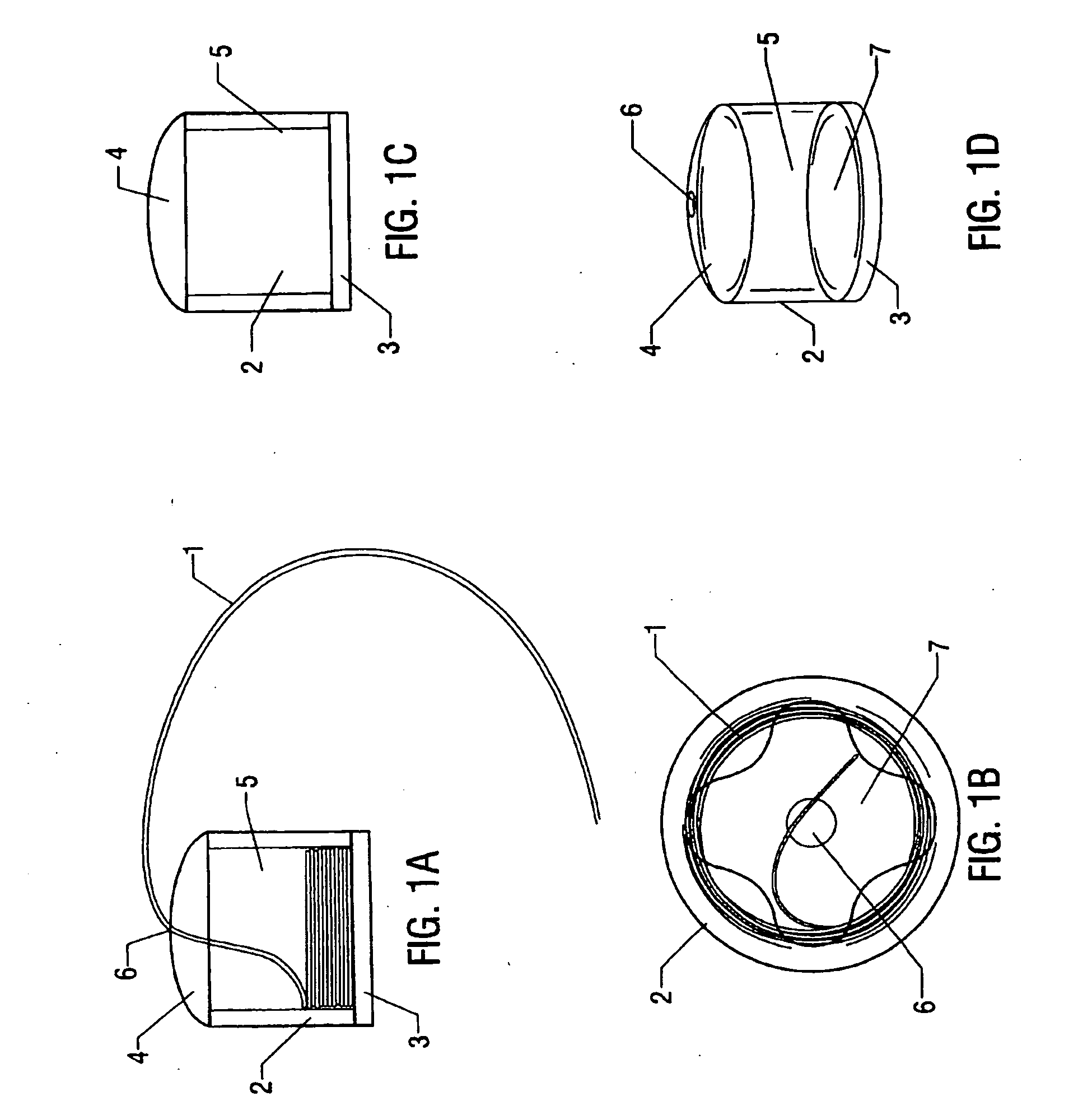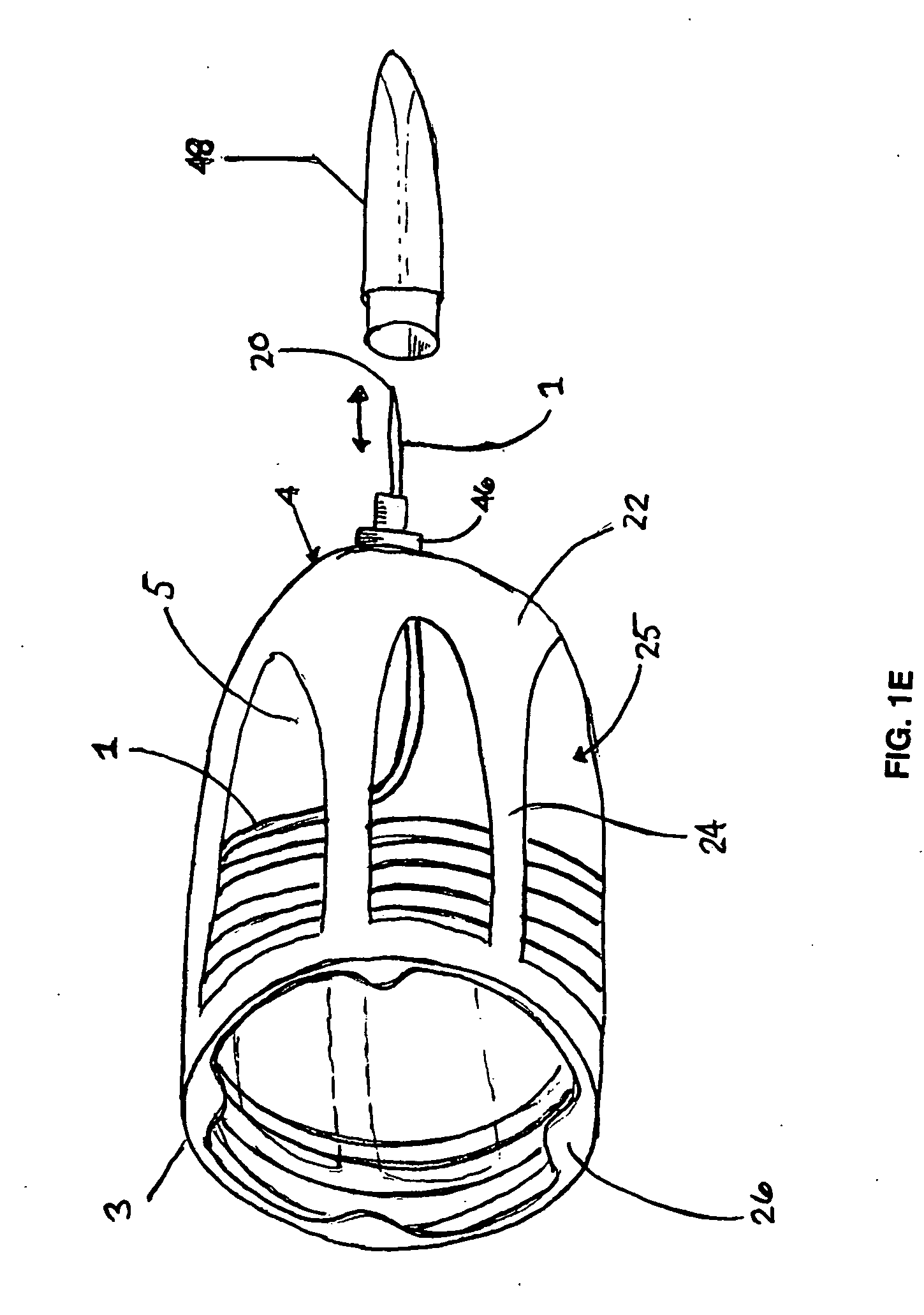Epidural catheter system and methods of use
- Summary
- Abstract
- Description
- Claims
- Application Information
AI Technical Summary
Benefits of technology
Problems solved by technology
Method used
Image
Examples
Embodiment Construction
[0032]FIG. 1A illustrates a lateral view of a preferred embodiment for the epidural catheter dispenser system with an epidural catheter. The catheter tubing 1 is shown with a portion of the catheter outside the dispenser and with the remaining portion of the catheter wound inside the dispenser's inner cavity 5. Preferably, and to prevent tangling, the catheter is wound flat against the bottom of the dispenser. The dispenser's inner cavity 5 is defined in the preferred embodiment by the sidewall 2 which can take a cylindrical shape, as illustrated, or a conical or other polyhedral shape. In some embodiments, the dispenser may have a spherical or cubic shape. The proximal end piece 3 defines the bottom border of the inner cavity 5 and the distal end piece 4 defines the upper border of the inner cavity. While not visible from the lateral view of FIG. 1A, a dispenser aperture 6 on the distal end piece 4 allows the catheter 1 to pass through from the inner cavity 5 to the exterior enviro...
PUM
 Login to View More
Login to View More Abstract
Description
Claims
Application Information
 Login to View More
Login to View More - R&D
- Intellectual Property
- Life Sciences
- Materials
- Tech Scout
- Unparalleled Data Quality
- Higher Quality Content
- 60% Fewer Hallucinations
Browse by: Latest US Patents, China's latest patents, Technical Efficacy Thesaurus, Application Domain, Technology Topic, Popular Technical Reports.
© 2025 PatSnap. All rights reserved.Legal|Privacy policy|Modern Slavery Act Transparency Statement|Sitemap|About US| Contact US: help@patsnap.com



